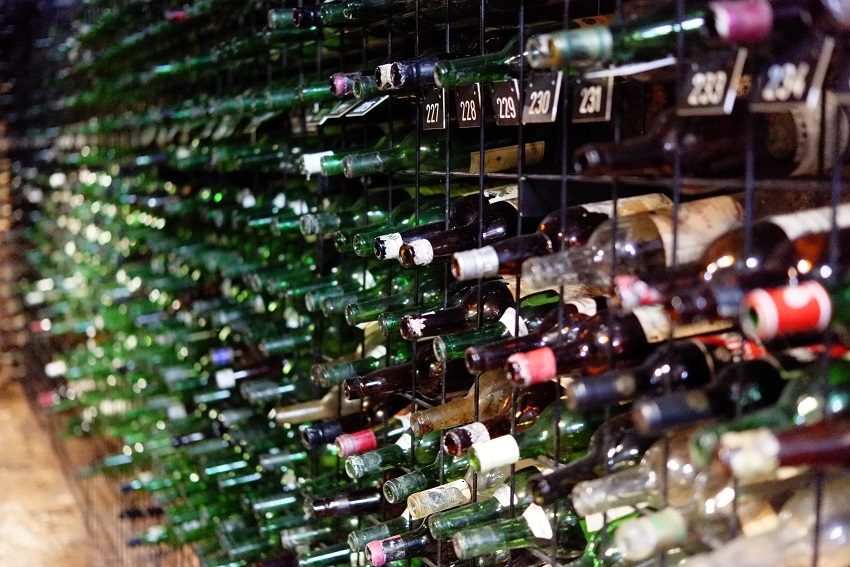Saltram: Making wine with history

Saltram hasn’t been in the hands of his family for nearly 80 years, but you get the feeling that William Salter, a mid-19th century immigrant from Devon, would be well pleased to see the Barossa winery he founded in 1859 making a bit of fuss about its 160th anniversary.
Saltram has had a bit of a bumpy ride, particularly during the 1970s and 1980s, when big businesses with little understanding of wine and scant respect for history were buying up and selling off wine companies with gay abandon. The wobbles worsened with the mid-80s swing away from red wine consumption.
Production at Saltram, which sits on a rise just outside Angaston, is currently enjoying an extended period of stability and growth under the ownership of Treasury Wine Estates, and once again is making a specialty of the full-bodied red wines that made the winery a household name and earned it Jimmy Watson trophies in 1966 and 2002. As well as its staples, which include the 1859 range and the long-standing Shiraz and Cabernet wines made under the Mamre Brook label, Saltram has established a range of high-end wines that include a series of reds made from single vineyards in various Barossa sub-regions, as well as ‘The Journal’ Centenarian Old Vine Shiraz, made, as its name suggests, from vines more than 100 years old.
Remarkably, Saltram is only on its 10th winemaker. The succession, which began with Edward Salter and the original crush of three-year-old vines in 1862, includes father-and-son Bryan and Nigel Dolan and the redoubtable Peter Lehmann, who at one of Saltram’s low points came very close to buying the winery. The current winemaker is Alex MacKenzie, who took over from Shavaughn Wells in 2017, when she left to work at TWE stable-mate Penfolds. MacKenzie, whose previous role was lead winemaker at Annie’s Lane in the Clare Valley, has since been immersing himself in winemaking history in a bid to get a handle on Saltram’s wine styles and the legacy he is now in charge of.
MacKenzie’s self-imposed program of education has included tasting his way through museum stocks of Saltram releases and sampling barrels of fortified wines that date back to the early 1950s, as well as dipping into the wine journals and diaries of his predecessors. It has been a fascinating experience, he says, and has increased his sense that the approach to winemaking at Saltram was progressive and adventurous.

“They were playing around, and every year was always different,” MacKenzie says.
MacKenzie says Saltram has traditionally relied on local fruit. “We’ve got about 40 hectares here and we do have growers, too, but we’ve always sourced our fruit from the upper Barossa.”
More recently, though, Eden Valley vines, over the hills just to the east and south, have been playing a growing role in Saltram wines. Eden Valley is also the source of the fruit for Saltram’s Riesling, part of its “S” series wines. MacKenzie, who has been making Clare Rieslings for 15 years, says his first attempt, made from 70-year-old “Survivor” vines, “increased skin contact to build the phenolics and texture, but still shows plenty of citrus and white peach on the nose”. You can only buy it in two places though: at cellar door in Angaston, and in China.
While traditional Barossa red varieties dominate the Saltram output, trial plantings made in the 1990s do generate a Tempranillo and a Sangiovese, “if the year is good enough”; the Barbera and Nebbiolo, however, were grafted over to Cabernet. For white fans, there is also a Fiano.
Mamre Brook, the wine perhaps most associated with Saltram, is named for the elegant stone house William Salter built and which still sits opposite the winery buildings and cellar door restaurant. (William was strongly religious: Mamre was an Old Testament camping-spot, west of the Dead Sea.) The house was for many years home to the incumbent Saltram winemaker (Nigel Dolan grew up there) but is now used for functions.
MacKenzie says it was Nigel Dolan who in many ways put Saltram back on track after the vicissitudes of the 70s and 80s. It was Dolan, for example, who in 1992 introduced Saltram No 1 Shiraz as a super-premium, rich red wine in the classic Barossa mould: like Dolan himself, it has since won numerous awards. The wine takes its name from the very first wine made by Edward Salter in 1862. More recently, Saltram has honoured Edward himself by naming its high-end, straight Cabernet-Sauvignon after him.
Saltram is celebrating its 160th with the release of a Special Rare Anniversary Tawny Port and the latest (2016) in the Single Vineyard series Shiraz, made this time from one of the home vineyards on Angaston Road.
These days, Saltram’s grapes are crushed using the facilities at the Wolf Blass winery (another TWE franchise) a few clicks to the north, but the barrel rooms at Saltram remain chock-a-block with maturing wines, and given MacKenzie’s enthusiasm for the large barrel format and for his mission in general, the traffic doesn’t look likely to slow.